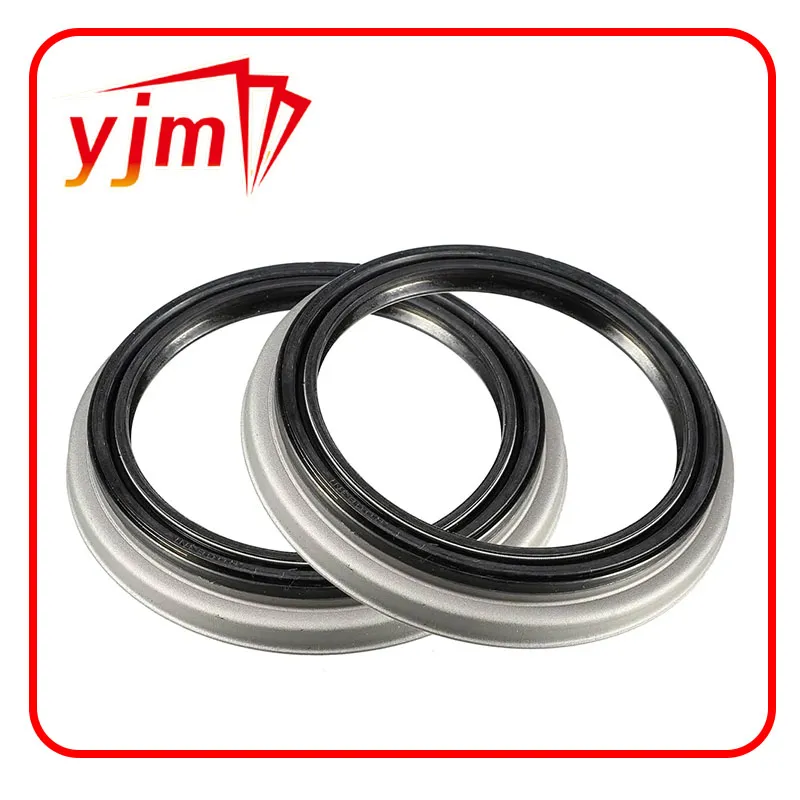50x72x10 Oil Seal Specifications and Applications Guide for Mechanical Use
Understanding Oil Seals The 50 * 72 * 10 Specification
In the world of machinery and automotive applications, oil seals play a critical role in ensuring the efficient operation of various components. Among these, the oil seal with the dimensions of 50 * 72 * 10 is a common specification found in various industries. In this article, we will explore what oil seals are, their function, and the significance of the specific dimensions 50 * 72 * 10.
What is an Oil Seal?
An oil seal is a mechanical component that helps prevent leakage of lubricants (such as oil or grease) from a housing or chamber. It also protects the internal components from contaminants like dust, dirt, and moisture. Oil seals are typically made of rubber or elastomeric materials, designed to withstand the pressures and temperatures found in machinery operations. They are often used in conjunction with rotating shafts, providing a barrier against fluid loss and external contaminants.
The Importance of Dimensions
The dimensions of an oil seal are critical to its performance. The number sequence 50 * 72 * 10 represents the inner diameter, outer diameter, and width of the seal, respectively
- Inner Diameter (ID) 50 mm - Outer Diameter (OD) 72 mm - Width (W) 10 mm
These measurements are essential to ensure a proper fit for the specific application in which the seal will be used. A seal that is too large will not fit securely, leading to fluid leaks, while one that is too small will not create an effective seal, allowing contaminants to enter.
Applications of the 50 * 72 * 10 Oil Seal
The 50 * 72 * 10 oil seal is commonly used in automotive applications, especially in engines and drivetrain systems. Some typical uses include
1. Engine Components Oil seals are utilized in various parts of the engine, such as the crankshaft and camshaft. They prevent engine oil from leaking while keeping dirt and debris from entering crucial engine areas.
oil seal 50 * 72 * 10

2. Transmission Systems In automotive transmissions, oil seals help maintain the integrity of the transmission fluid, ensuring smooth operation and preventing wear and tear on the internal components.
3. Pumps and Motors Oil seals also find usage in various types of pumps and electric motors, where they help retain lubricants and shield against external contaminants.
4. Industrial Equipment In manufacturing and industrial settings, machinery such as gearboxes and hydraulic pumps often employ oil seals to ensure longevity and optimal performance.
Material Considerations
The material composition of the 50 * 72 * 10 oil seal is vital to its performance and durability. Common materials include
- Nitrile Rubber (NBR) Excellent resistance to oil and fuel, making it ideal for use in automotive applications. - Fluoroelastomer (FKM) Superior heat and chemical resistance, suitable for environments with extreme temperatures or aggressive fluids. - Polyurethane Known for its wear resistance, polyurethane oil seals are more robust in high-load applications.
Each material has its unique properties, and the choice often depends on the specific operating conditions, including temperature range, type of fluid, and the presence of any chemical agents.
Installation and Maintenance
Proper installation is crucial to the effectiveness of any oil seal. It’s essential that technicians ensure the sealing surface is clean and free of damage during installation. Misalignment or dirt can lead to premature wear and seal failure. Regular maintenance checks can also help identify any signs of leaks or degradation, preventing costly repairs down the line.
Conclusion
The 50 * 72 * 10 oil seal serves as a vital component in numerous applications across various industries. Understanding its design, purpose, and optimal application conditions is essential for maintaining the efficient operation of machinery and equipment. By choosing the right oil seal, one can ensure durability and performance, ultimately contributing to the longevity and reliability of equipment. Whether for automotive, industrial, or any other application, investing in quality oil seals remains a crucial consideration for engineers and maintenance personnel alike.
-
Understanding the Front Main Engine Seal: Purpose, Maintenance, and Installation
News Jul.29,2025
-
Understanding O-Rings and Seal Rings: Types, Applications, and Custom Solutions
News Jul.29,2025
-
Understanding Crankshaft Oil Seals: Rear Seals, Pulley Seals, and Their Role in Engine Integrity
News Jul.29,2025
-
The Importance of Front and Rear Crankshaft Seals in Engine Performance and Oil Management
News Jul.29,2025
-
Crank Oil Seals: Functions, Types, and Cost Considerations in Engine Maintenance
News Jul.29,2025
-
A Comprehensive Guide to O-Rings and Seals: Types, Materials, and Global Applications
News Jul.29,2025
-
Mastering Diesel and Performance Engine Maintenance: A Guide to Critical Oil Gaskets
News Jul.28,2025
Products categories















